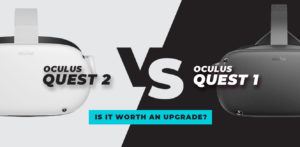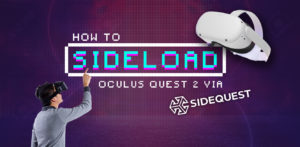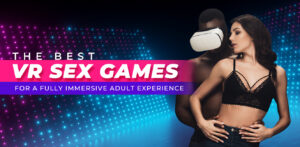Table of Contents
- Exploring Design and Features in Our Apple Vision Pro Review
- Connecting in a Whole New Way: FaceTime on Apple Vision Pro
- Total Control at Your Fingertips: Apple Vision Pro’s Integrated Control System Explored
- Seamless Fit and Comfort: Apple Vision Pro’s Smart Design Features
- Pioneering Mixed Reality: Apple Vision Pro’s Future MR Tech
- Apple Vision Pro Compared to VR Headsets in the Current Market
In case you’ve been living under a rock lately, Apple has given an official press teaser trailer of their latest VR tech. Apple unveiled its highly anticipated augmented reality headset on June 4th, the Apple Vision Pro, which the company claims to be “the most advanced personal electronic device ever.” After the presentation, it was clear that they had the specs to back up the claims too.
This groundbreaking device combines the immersive experience of virtual reality with the overlay of digital images onto the real world, creating what Apple refers to as “mixed reality.” We’ve looked at AR/VR and mixed reality before but nothing comes close to what Apple is claiming to have achieved with their new headset.
So just what did they say? Let’s get into it. we will delve into the features, specifications, and comparisons of the Apple Vision Pro compared to other VR headsets on the market. Is it the king of headsets? Let’s find out!
Exploring Design and Features in Our Apple Vision Pro Review
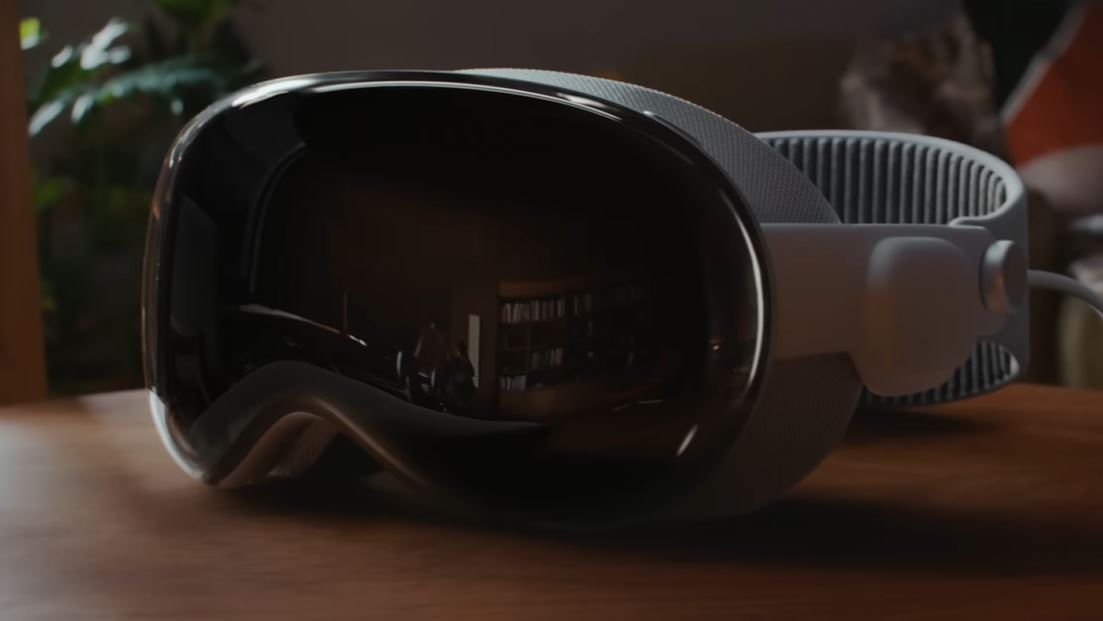 The Apple Vision Pro, resembling a pair of futuristic ski goggles, features a glass 23-million-pixel screen that covers the upper face. In typical Apple fashion, the design is sleek and sexy although not quite as glamorous as most of their finished products. Guess it’s still difficult to make VR look sexy, even for industry giants like Apple!
The Apple Vision Pro, resembling a pair of futuristic ski goggles, features a glass 23-million-pixel screen that covers the upper face. In typical Apple fashion, the design is sleek and sexy although not quite as glamorous as most of their finished products. Guess it’s still difficult to make VR look sexy, even for industry giants like Apple!
The device is controlled using the wearer’s eyes, hands, and voice, enabling what Apple calls “spatial computing.” This allows users to interact with digital content as if it were part of their physical space. The headset comes with built-in speakers and attaches using an adjustable headband, while a wire connects to a battery pack that can be conveniently placed in the user’s pocket. The device also incorporates vents for cooling, ensuring a virtually silent operation.
The strap is made of breathable expandable soft padding which looks comfortable. It’s also wise to grip a large chunk of the back of your head to allow for better support. Again, not very sexy but this is purely function over fashion by design. The fully loaded headset with its many cameras and sensors is no doubt quite heavy so ensuring the wearer is comfortable is key. The biggest selling point of the Apple Vision Pro is to replace your TV and this may mean wearing the headset for long periods. A robust and comfortable strap is a must and Apple has made the right choice.
Apple Vision Pro Specifications
Let’s take a closer look at the specifications of the Apple Vision Pro:
Display: 23-million-pixel glass screen
Input: Eye tracking, hand gestures, and voice commands
Audio: Built-in speakers with directional spatial audio. The very best technology currently on the market.
CPU/GPU: Two very powerful chips. The M2 and the R1 will handle all graphical and computational needs making this an extremely powerful device. Many predictors would have settled for the M2 chip alone as it has had amazing results in Apple’s latest devices
Lens: Custom mini-OLED with 4K resolution per eye
Connectivity: Wire connection to a battery pack. Sits snugly in your pocket
Cooling: Vents for heat dissipation. Also head strap is breathable soft material as is the face plate
Price: $3,499 (€3,250) Yes that is not a typo!
Battery Life: Expected battery life is two hours. You may want to buy a spare battery although that might be a pricy investment. Yet to be confirmed.
Availability: US market early next year, with more countries to follow later in the year. We can expect to hear more details closer to the launch.
If you would like to check out more details about the Apple Vision Pro, then visit the official website here.
Advanced Features of the Apple Vision Pro
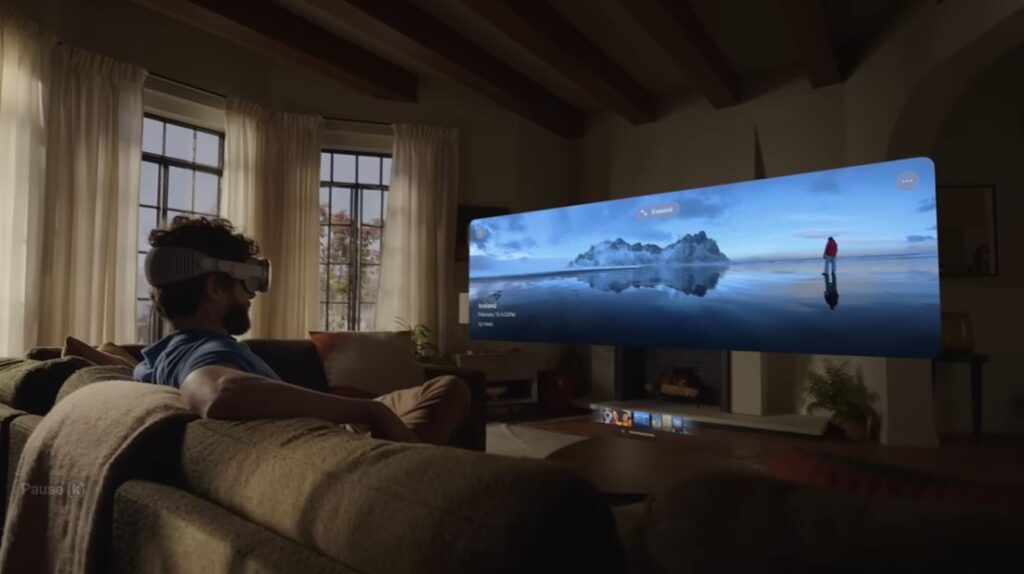
Photo from Apple, YouTube
Stereophonic Directional Sound:
Apple’s Vision Pro has accurate and realistic sound location thanks to its incorporation of directional spatial audio technology. The audio can be placed anywhere in the virtual world thanks to this function. To achieve a more realistic and exciting listening experience, the Vision Pro mimics the way sound travels in the actual world. If a virtual object is placed to the left of the user, for instance, the sound associated with that object will be played through the left earpiece of the headphones. The Vision Pro’s mixed-reality experience is further enhanced with spatial audio technology.
4K Resolution for Each Eye:
The Apple Vision Pro has a stunning 4K resolution for each eye. Visuals in VR and AR will benefit greatly from this high resolution, as they will appear much sharper and more detailed. The OLED allows for richer colors and much deeper blacks which is a cut above most devices currently out. Users may expect crisp and lifelike images with 4K resolution, drawing them deeper into the digital experience. The screen-door effect is mitigated by the higher pixel density of the display, an issue common in lower-resolution VR headsets where individual pixels are visible. The Vision Pro’s 4K per eye resolution allows for stunning graphics and improves the device’s overall visual quality.
Sensors for Measuring Depth:
The Apple Vision Pro’s depth of field sensors improve the integration of augmented reality into the physical world. These sensors give the headset a sense of the user’s surroundings, letting it place and interact with objects with greater precision. Placed objects also cast shadows and realistically affect the lighting making them feel more physical and real within your 3D environment. To accurately superimpose virtual items onto the actual environment, depth of field sensors measure the distance between the headset and physical objects. To further increase the sensation of realism and immersion, this technology allows users to interact with virtual items as if they were physically present in their environment. To provide a more believable mixed reality experience, depth of field sensors and spatial computing capabilities are used together to ensure that virtual objects line up perfectly with the real-world environment. To put it simply, it just works and feels the way you would want it to.
The Apple Vision Pro’s 4K resolution per eye, depth of field sensors, and directional audio all work together to provide a lifelike mixed reality experience. These additions improve the digital content’s audiovisual quality and spatial precision, letting users immerse themselves in it in a way that doesn’t disrupt their natural surroundings.
Connecting in a Whole New Way: FaceTime on Apple Vision Pro
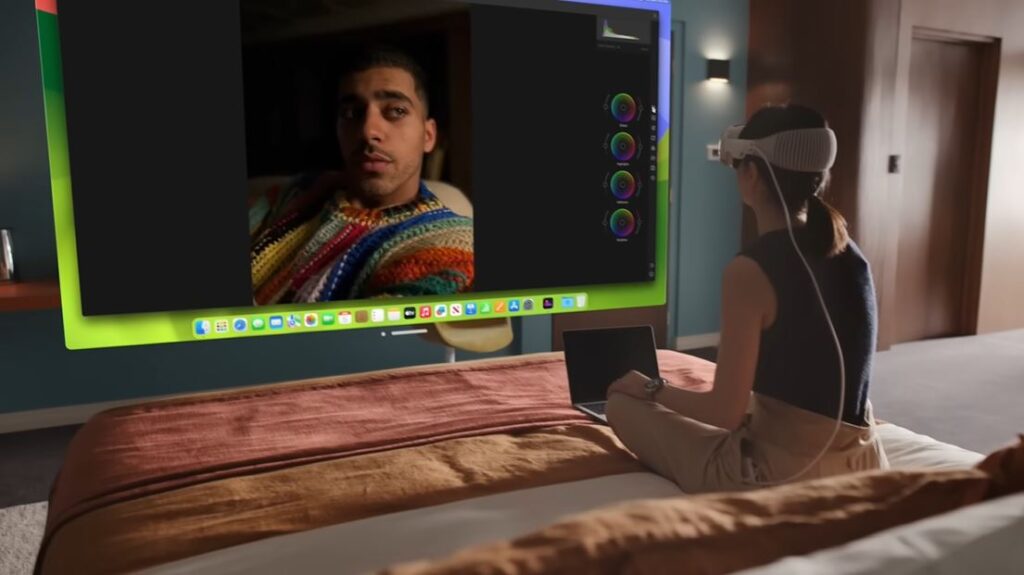
Photo from Apple, YouTube
One part of the rather impressive showcase that may have left a few people worried was the face scan stuff. On first use, the many cameras and sensors 3D map your face in an almost but not quite realistic way. The result, at least from the showcase, looked a little uncanny valley and strange. The feature itself is quite innovative as it’s used for two main things:
Face-Time:
Take calls or host meetings with your Apple Vision Pro. When in a video call, your 3D avatar face is presented to the other viewers which looks very weird indeed. It’s almost Black Mirror levels of strange seeing this sci-fi robot version of a human trying to mimic facial expressions. The tech is nearly there but just a little off. Not sure if this feature is going to be a great selling point for the headset.
In Person Conversations:
When you’re not immersed in your 3D augmented reality, the front glass will show your face to other people in the room. This makes it a little more sociable as those in the room will know you’re engaging with them. At all other times, the glass displays foggy swirls which look cool and let outsiders know that you’re immersed in something. Again, I’m not convinced that this robot plasticine version of your face displayed to others is the future, I’m a little scared that it might be! Yikes!
Total Control at Your Fingertips: Apple Vision Pro’s Integrated Control System Explored
Additionally, the Apple Vision Pro introduces a novel interaction method through eye tracking, hand gestures, and voice commands. This allows users to navigate the device’s operating system, visionOS, and control various apps and functionalities without the need for physical controllers. Apple’s claim that “hundreds of thousands of familiar iPhone and iPad apps” will work seamlessly with the device is an exciting prospect for users who are already familiar with the iOS ecosystem.
Another notable aspect of the Vision Pro is its compatibility with external accessories. The headset supports Bluetooth accessories, including the Magic Keyboard and Magic Trackpad, providing users with enhanced productivity options. We even got to see a PS5 being played on a virtual massive screen in the presentation which looked rather amazing.
Furthermore, the device enables users to connect their Mac and use it within the headset, expanding the possibilities of cross-device integration. They have also let us know that you can connect the headset directly to your MAC to have an indefinite power supply. Might be a great option when your battery pack runs out.
Seamless Fit and Comfort: Apple Vision Pro’s Smart Design Features
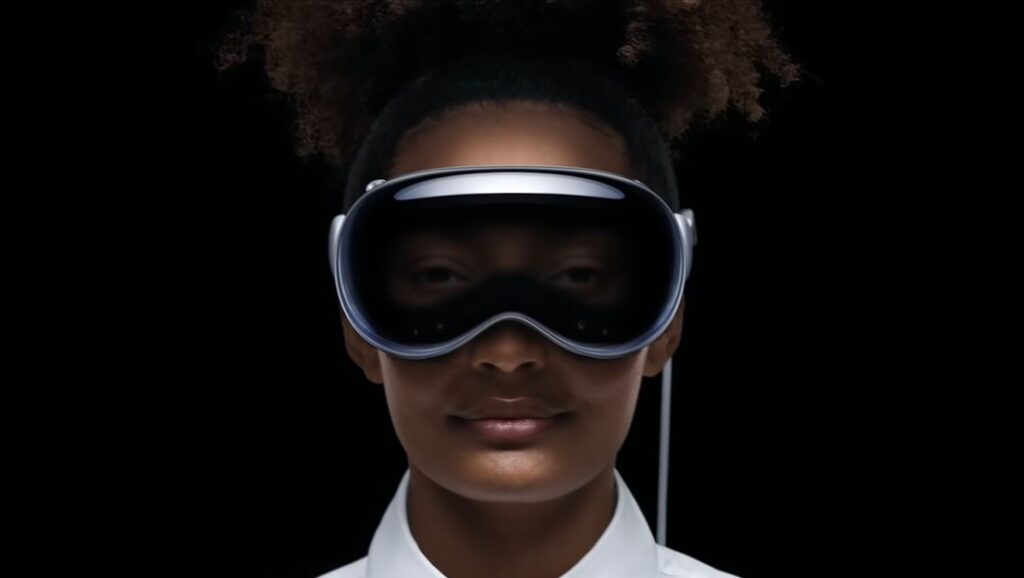
Photo from Apple, YouTube
Apple’s Vision Pro aims to redefine spatial computing by seamlessly blending the digital and real worlds. Others have tried to gamble with this kind of tech before but Apple in general leads the industry with their finished products. The device’s high-resolution display promises unprecedented sharpness and the ability to deliver 4K video, enhancing the visual experience for users. The inclusion of downward-facing cameras enables the headset to capture users’ hand movements, even when their hands are resting low on their bodies.
To ensure a personalized and comfortable fit, Apple offers modular mask and strap options for the Vision Pro. The cloth-lined mask, referred to as the “Light Seal,” and the ribbed “Head Band” can be adjusted to accommodate various face shapes and head sizes.
Moreover, Apple has partnered with Zeiss to provide custom optical inserts that magnetically attach to the lenses of individuals who wear glasses. This feature enhances the accessibility of the device and ensures a clear and immersive experience for users with prescription eyewear.
All these smart design choices and clever tech decisions make us excited that Apple is going to pull it off again, even if the asking price is crazy high!
Pioneering Mixed Reality: Apple Vision Pro’s Future MR Tech
The introduction of the Apple Vision Pro marks a significant milestone for Apple, as it represents the company’s first foray into the augmented reality headset market. Apple’s CEO, Tim Cook, expresses his belief in the profound impact of augmented reality and its ability to unlock new experiences like never before. The Vision Pro, together with the accompanying visionOS, introduces a spatial computing platform that presents countless possibilities for users and developers alike. It seems likely that Apple is hoping to replace our mobile phones sometime in the future with these all-in-one headsets.
While the Vision Pro carries a substantial price tag, its advanced features, versatility, and seamless integration with the Apple ecosystem position it as a pioneering device in the augmented reality space. Developers have already shown enthusiasm for the headset, and with Apple’s reputation and user base, the Vision Pro has the potential to push augmented reality into the mainstream. If it was any company other than Apple going to market with such a high asking price, I’d say they were crazy. Apple however has a habit of setting new trends and breaking new ground. I’m excited to see if this venture takes off.
However, it is important to note that the Vision Pro, like any heads-up display, may raise questions about the impact of obtrusive technology on our daily lives. Wearing the headset for extended periods may challenge the way we perceive and interact with the real world. Ultimately, it remains to be seen how the Vision Pro will be adopted by consumers and whether it will revolutionize the way we compute and experience reality. I’m not sure the world is ready yet to be trapped in the Oasis like in Ready Player One. The anti-social aspects of diving into a fake reality are scary when you think about it.
The Apple Vision Pro showcases Apple’s commitment to innovation and its determination to shape the future of augmented reality. With its advanced features, seamless integration with Apple’s ecosystem, and potential for widespread adoption, the Vision Pro holds the promise of transforming the way we perceive and interact with our digital and physical environments. Only time will tell if they can make this as successful as the iPod or the iPhone.
At the very least, let’s hope they create healthy competition within the VR/AR industry. New tech is good for us consumers. The future of headsets is looking bright!
Apple Vision Pro Compared to VR Headsets in the Current Market
The Apple Vision Pro stands out in the market due to its advanced features and capabilities. However, it comes with a significantly higher price tag compared to other VR headsets. The leading VR headset on the market, the Meta Quest 2 from Facebook’s parent company, is priced at €349.99, making the Vision Pro approximately ten times more expensive. This price difference may be a determining factor for consumers when choosing between the two. Also later this year, the Meta Quest 3 is launching at an asking price of $499. This makes shopping at Christmas time for a new headset a tricky time for consumers. The huge price difference will be the deciding factor for a lot of people.
In terms of technology, the Vision Pro offers a unique combination of augmented and virtual reality experiences. While other VR headsets focus solely on virtual reality, Apple’s device allows users to seamlessly switch between augmented and virtual reality modes using a dial. This versatility broadens the range of applications and experiences available to users. However, the Quest 3 similar to the Quest Pro will feature mixed reality and augmented reality. It will also have depth-of-field sensors to make the experience more realistic. This makes the Apple Vision Pro seem a little less appealing and not the only decent option on the market for 2024.


